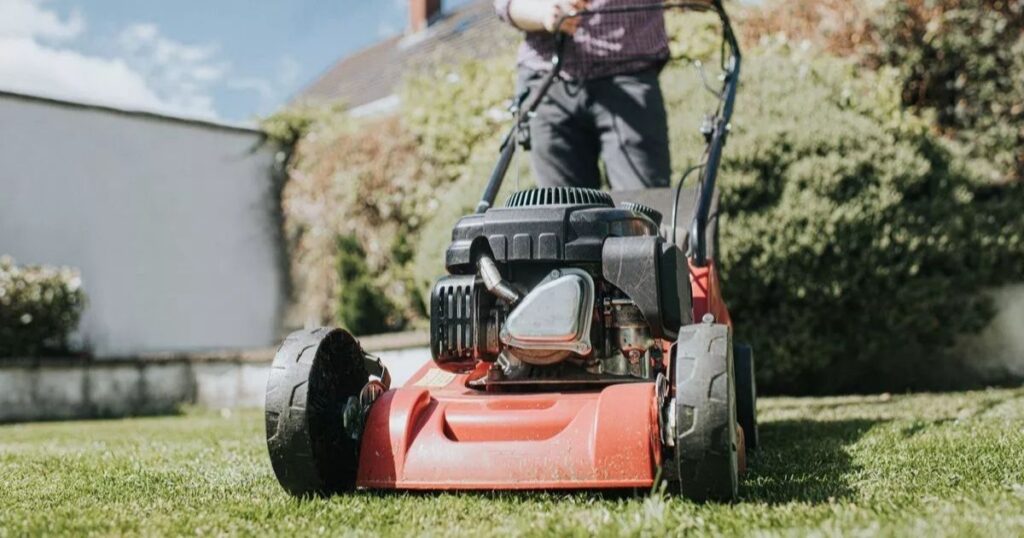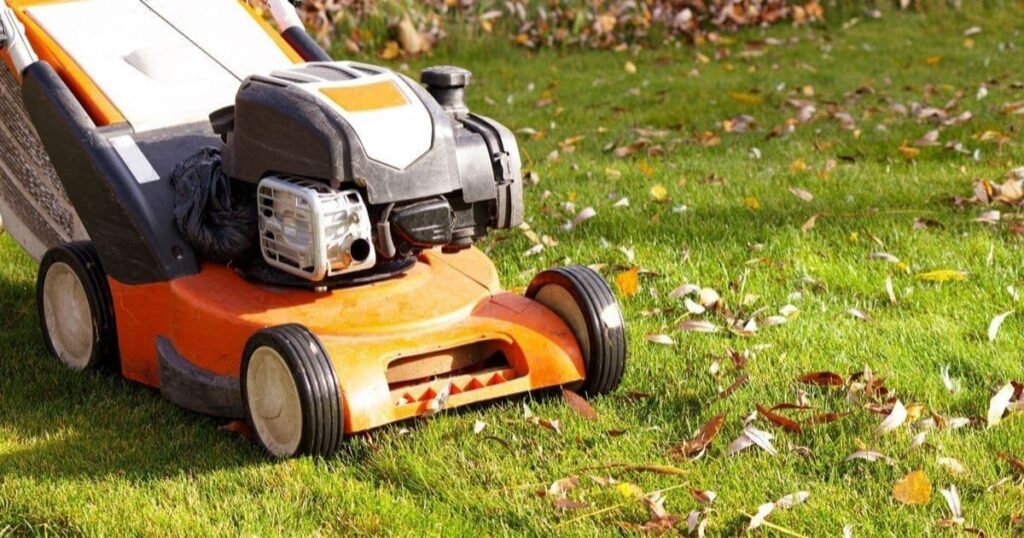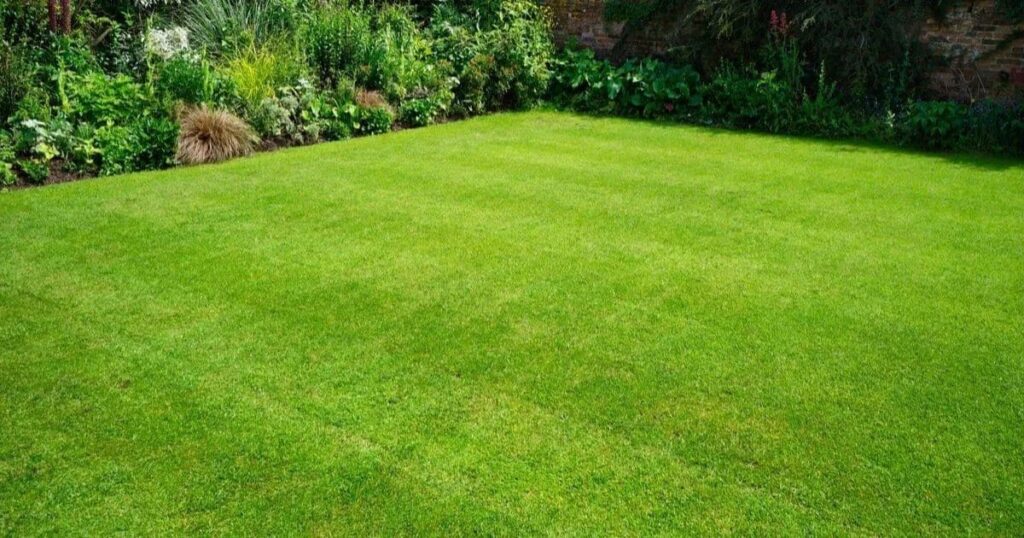Mowing is the cornerstone of lawn maintenance, playing a crucial role in keeping your grass healthy and presentable. The timing of your mowing activities can significantly impact your garden’s overall appearance and health. This comprehensive guide will explore when to mow your lawn throughout the seasons and the best times of day for optimal results.
When to mow your lawn depends on the season
The mowing season typically spans from March to October, although mild weather conditions may extend this period into winter. However, it’s important to note that the ideal start date for mowing can vary based on local climate conditions.
Spring Lawn Care
Spring marks the beginning of the active growing season for most grass types. Here are some key points to consider for spring lawn maintenance:
First Cut: Aim to perform the first grass cut of the year in mid-March, weather permitting.
Frequency: Once you start, mow the lawn at least once a week.
Grass Height: Maintain a consistent height throughout spring:
- For most lawns: 2.5-4cm (1-1.5in)
- High-traffic areas: 5cm (2in)
- Shaded areas: 7.5cm (3in)
Avoid Over-Cutting: Mowing too short can weaken the grass and encourage weed and moss growth.
Spring is also an excellent time for other lawn care activities such as overseeding and lawn feeding to promote healthy growth.
Summer Lawn Mowing

Summer brings rapid grass growth and increased lawn use. Here’s how to manage your lawn during this season:
- Frequency: Increase mowing frequency to twice a week during peak growing periods.
- Height Adjustment: Raise the cutting height slightly to protect grass roots from heat stress.
- Watering: Water deeply but infrequently to encourage deep root growth.
- Mulching: Consider leaving grass clippings on the lawn as a natural fertilizer.
Remember, summer is also an ideal time for lawn aeration and topdressing to improve soil structure and nutrient absorption.
Autumn Lawn Care
As growth slows down in autumn, adjust your mowing routine:
- Frequency: Reduce mowing to once every 1-2 weeks.
- Height: Gradually lower the cutting height to prepare the lawn for winter.
- Leaf Management: Remove fallen leaves regularly to prevent smothering the grass.
- Final Cut: The last mow of the season should leave the grass slightly shorter than usual.
Autumn is also the perfect time for lawn scarification to remove thatch and moss.
Also read this post:Top five lawn weeds you can do without
Winter Lawn Care
While mowing is less frequent in winter, some maintenance may still be necessary:
- Mowing: Only mow if the grass is actively growing and conditions are dry.
- Height: Keep the grass slightly longer to protect it from frost damage.
- Avoid Foot Traffic: Minimize walking on frozen or waterlogged lawns to prevent damage.
Winter is an excellent time to plan for the upcoming growing season and maintain your lawn care equipment.
Need a professional?
For those who find lawn maintenance challenging or time-consuming, professional help is always an option. Experienced lawn care specialists can provide tailored services to keep your lawn in top condition year-round.
What time of day should you mow your lawn?

The time of day you choose to mow can significantly impact the health and appearance of your lawn. Let’s explore the pros and cons of mowing at different times:
Early Morning (6 AM – 8 AM)
Early morning is generally considered the worst time for lawn mowing:
- Wet Grass: The morning dew, rain, or irrigation can make the grass wet and difficult to cut.
- Mower Issues: Wet grass can clog and potentially damage your mower.
- Grass Damage: Mowing wet grass can lead to tearing, visible ruts, and soil compaction.
Mid-Morning (8 AM – 10 AM)
Mid-morning is often an ideal time for mowing:
- Dry Grass: By this time, morning dew has usually evaporated.
- Optimal Temperature: The weather is typically cooler than midday, making it comfortable for both you and the grass.
- Recovery Time: Grass has time to recover before the heat of the day sets in.
Midday (12 PM – 2 PM)
Midday mowing is generally not recommended:
- Heat Stress: High temperatures can stress the grass, especially when freshly cut.
- Personal Discomfort: The heat can make mowing uncomfortable for you as well.
- Increased Water Loss: Cutting during peak heat can lead to excessive moisture loss from the grass blades.
Late Afternoon (4 PM – 6 PM)
Late afternoon can be a good alternative to mid-morning:
- Cooler Temperatures: The heat of the day has passed, reducing stress on the grass.
- Dry Conditions: The lawn has had time to dry if there is morning moisture.
- Recovery Time: Grass still has some daylight hours to begin recovery before nightfall.
Evening (6 PM – 8 PM)
While evening mowing is sometimes necessary due to time constraints, it’s not ideal:
- Moisture Risk: Cutting too late can leave grass wet overnight, potentially encouraging fungal growth.
- Limited Recovery: The grass has less time to heal before nightfall.
- Noise Concerns: Late mowing might disturb neighbors in residential areas.
When choosing the optimal mowing time, consider factors such as your local climate, grass type, and personal schedule. Flexibility in your mowing routine can help you achieve the best results for your lawn.
Get some garden inspiration or learn more about how to maintain your lawn
Maintaining a beautiful lawn goes beyond just mowing. Here are some additional tips and resources to help you create the lawn of your dreams:
Read more maintenance tips
- Lawn Aeration: Learn why and how to aerate your lawn to improve soil structure and root growth.
- Topdressing: Discover the benefits of adding a thin layer of soil or compost to your lawn.
- Weed Control: Explore natural and chemical methods to manage garden weeds effectively.
- Watering Techniques: Understand the best practices for watering your lawn to promote healthy growth.
- Fertilization: Learn about the right types and timing of fertilizers for your specific grass type.
Check a few lawn jobs we’ve done
[Note: This section would typically include before-and-after photos or case studies of successful lawn transformations. As an AI, I can’t provide specific examples, but this is where you would showcase your work if you’re a lawn care professional.]
Useful info from our blog about lawn care

- Creating a Lawn Care Calendar: A month-by-month guide to keeping your lawn in top shape.
- Choosing the Right Grass Seed: Tips on selecting the best grass varieties for your climate and usage.
- Dealing with Lawn Pests: Identify and manage common lawn insects and diseases.
- Eco-Friendly Lawn Care: Explore sustainable practices to maintain a beautiful lawn while minimizing environmental impact.
- Lawn Alternatives: Discover low-maintenance options for areas where traditional grass struggles.
Remember, a healthy lawn is the result of consistent care and attention to detail. By following these guidelines and staying informed about best practices, you can enjoy a lush, vibrant lawn that enhances your home’s curb appeal and provides a perfect space for outdoor activities.
In conclusion, knowing when to cut your grass is a crucial aspect of lawn maintenance. By understanding the seasonal needs of your lawn and choosing the optimal time of day for mowing, you can significantly improve the health and appearance of your grass. Remember to adjust your mowing schedule based on your specific grass type, local climate conditions, and the overall health of your lawn. With proper care and attention, you can maintain a beautiful, lush lawn that you can be proud of year-round.
FAQs
When should you start cutting grass?
You should typically start cutting grass in early spring, usually around mid-March, when the grass begins actively growing again. The exact timing can vary depending on your local climate and the specific grass type in your lawn.
What is the best time to cut the grass?
The best time to cut grass is generally in the mid-morning, between 8 AM and 10 AM. This allows morning dew to evaporate while avoiding the heat stress of midday and gives the grass time to recover before nightfall.
Is it better to cut grass before or after rain?
It’s better to cut grass before rain rather than after. Mowing dry grass provides a cleaner cut and reduces the risk of damaging your lawn or clogging your mower with wet clippings.
Is it okay to cut grass with morning dew?
It’s not ideal to cut grass with morning dew as wet grass can lead to an uneven cut and potential lawn damage. It’s best to wait until the dew has evaporated, which usually occurs by mid-morning in most climates.











